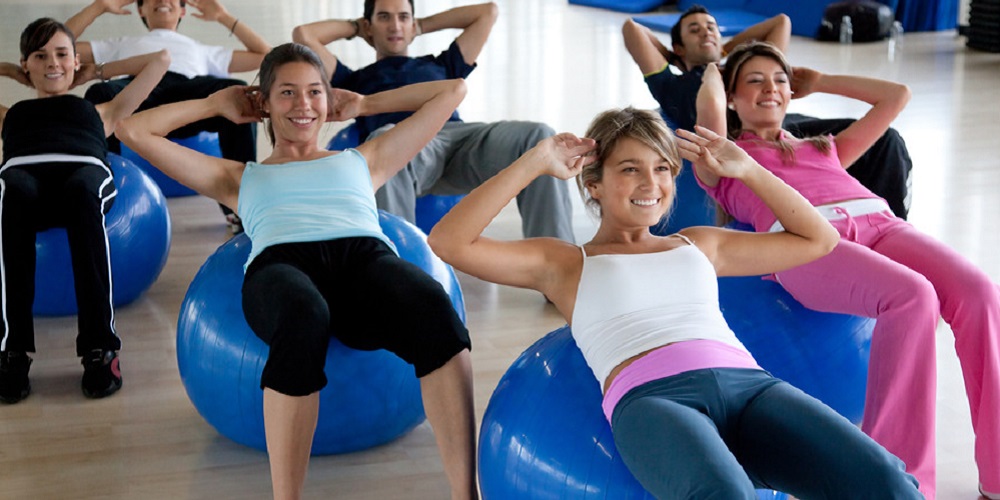Sometimes clichés are spot on and maintaining balance with your fitness and health is one of them. Reduce your risk of injury with a few simple steps to stay balanced and on track with workouts!
A focus on fitness is great for your overall health and wellbeing, especially after an indulgent holiday season. To ensure you are getting the best out of your fitness routine, it’s crucial that you reduce your risk of injury. That means using proper form, technique, and methods while working out to prevent getting hurt.
More BuzzChomp: Shortbread Christmas Cookies a Simple Vegan Treat
Workout injuries not only cause pain, but prevent you from further exercise, derailing all of the hard work you’ve put in thus far. According to the National Safety Council, the third leading cause of death in the U.S. is accidental injury. While you are not likely to pull a James Preston a la the latest Sex and The City reboot, you could tear a muscle if you’re not careful. Don’t let an injury ruin your fitness and current healthy habits. Reduce your risk of injury with these simple ways to safe and effective workouts.
Learn To Reduce Your Risk of Injury
Make Sure to Properly Stretch
Taking the time to stretch before and after your fitness routine can both prevent injuries, and help you to recover from minor muscular injuries. Physical therapy (much of which is stretching exercises) can reduce treatment costs for patients by about 72%. Do what the pros do and be mindful of stretching your body before your fitness routine. Warm up with stretching, then unwind down from your routine with some stretching as well. It is an easy step to take to prevent injuries, plus it loosens you up for your next day of exercise and keeps you feeling strong.
Use Bluetooth While Working Out At Home
If you have ever gotten tangled up in your headphone wires, you know how frustrating it can be. All sense of rhythm is lost while untangle cords. Use a Bluetooth speaker in your home gym instead of tangling with wires. Cast routing technology makes it easy to connect through a CDN and firewall. It ensures faster web loading and faster music load times. Bluetooth technology is a simple solution for staying safer (and less frustrated) during your fitness routine in your at-home gym. It also works great while running outside, keeping your phone in your pocket and wire-free ear buds in your ears.

Don’t Crank Up Your Tunes
When we think about fitness-related injuries, typically hearing does not come to mind. But if you put your music on blast, you could wind up with a hearing problem that is near impossible to fix. Music is a must for most people when they are working out. Music is motivational, it keeps you focused and in time. However, you do not want to go full-on blast. About 15% of adults in America (that is 37.5 million people) report some problem with their hearing. One of the quickest ways to damage your hearing is with a loud noise. Keep the music set to a lower level to protect your hearing. Lower volume levels also ensure you hear what’s around you, which is crucial when exercising outdoors or around other people.
Hydrate, Hydrate, Hydrate
Enough cannot be said about being hydrated and staying that way throughout your exercise routine. Dehydration is a very real threat when you are working out. You sweat more profusely, which means your body is losing more water than normal and it is losing it fast. Taking frequent breaks to rehydrate is essential during any fitness routine.
Even mild forms of dehydration can cause discomfort or muscle tightness. That in turn leads to pulled muscles, cramps, or worse. For example, if you experience a headache after your fitness routine, you may be dehydrated. Combine this dehydration with a lack of stretching and your risk of injury during your next workout becomes very high. Of course, there are serious forms of dehydration that can damage organs. Drink plenty of water during your workouts and after you’re done. Proper hydration is also great for your skin, an added bonus if you needed one.
Slow Down and Don’t Over Do It
The old adage of “no pain, no gain” has been disproved many times. You do not have to suffer to get the most out of your fitness routine. You do not have to push your body to the maximum every time you work out to see gains. What you need to do is get out of your comfort zone and challenge your body. This does not mean pain in a physical sense, but likely mentally challenging.
Fitness is a marathon, not a sprint. Pushing yourself to the max is an easy way to injure yourself. As a matter of fact, overdoing it and experiencing an injury will keep you from realizing gains in the gym. Slow and steady wins the race when it comes to working out. Ensure you are challenging your mind and body, but learn your limits. Building momentum over time is easier on your body than trying to squeeze in as much gain as possible in a shorter period of time. Don’t go out and run three to five miles without first being able to run one mile consistently with ease. Give yourself more time to reach your goals and give your body time to acclimate to your new fitness routine.
Staying fit is important, but so is protecting yourself from injuries. Learning to reduce your injury risk is crucial to long term success, so take our tips to heart. A workout injury can easily undo all the progress that you made. It is far better to be mindful of risky behaviors while you are working out than to take the risk and be sidelined with an injury. Taking a few simple steps to protect yourself during your fitness routine will pay off with injury-free workouts.












